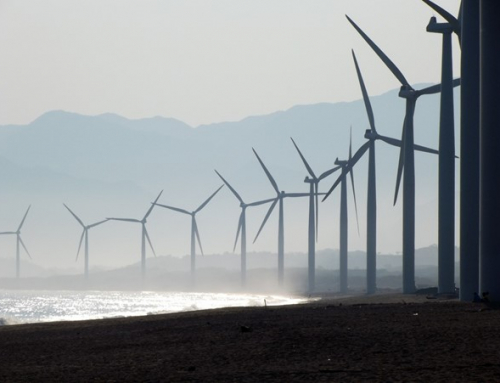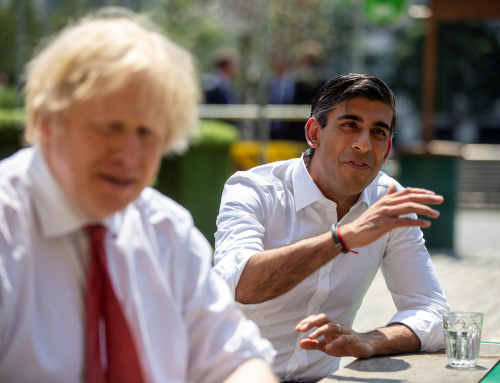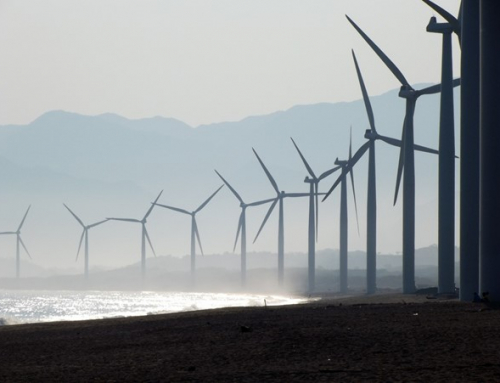It could only happen to the accident-prone UK prime minister Mrs May, couldn’t it? After more than 18 months of procrastination she finally, last week (on 26 February) put legislation before parliament which would impose a cap, or ceiling, on energy prices.
Unfortunately, three days later (on 1 March) the National Grid announced that the severe weather and supply problems were causing gas shortages. This led to a fearsome spike in gas prices which could make any price ceiling imposed look more like a floor.
The big idea, often mooted but not acted upon, was to counter and contain what Mrs May called the “rip off” prices energy companies, particularly the big six utilities, have been imposing on customers for a very long time. The big six cartel (British Gas, EDF, E.ON, SSE Scottish Power, and Npower) dominates the UK energy provision retail market to the tune of 80 per cent.
Mrs May said that by allowing the hitherto toothless regulator Ofgem to impose a cap on the standard variable tariff (SVT), the most expensive of the tariffs of levied by the big six, there would be a saving a £100 a year for 11 million households and reduce the average annual bill to £1050 a year. The hope is the policy will be given royal assent before the parliamentary summer recess enabling the cap on prices to come into effect before next winter.
The genesis of this intervention in market forces in the energy market (the first since privatisation 30 years ago) came before the 2010 election when Ed Miliband the then leader of the Labour Party said, if elected, he would cap energy prices. He wasn’t elected of course but the threat lingered and spooked the new prime minister, David Cameron sufficiently for him to ask the Competition and Mergers Authority (CMA) in 2015 to look into the situation.
The CMA took a long time but when they finally reported early in 2016 they said, yes, the big six were ripping off consumers for about £1.4billion a year. Part of the reason for this was the SVT. The CMA recommended that consumers shop around and switch to an alternative supplier who offered cheaper fixed rate tariffs.
This policy is considered to have worked, in that around five million consumers have switched from the big six to the more than 60 small new company entrants to the energy market, some of which have suitably catchy names like Ovo, Bulb, and Spark. These offered, usually, short one-year contracts at a lower rate than anything the big six could manage.

Iain Conn CEO of Centrica takes flak for closing down the company’s North Sea Rough gas storage facility, the largest in the UK, as winter approached thus putting pressure on gas supplies .
But there were problems despite the switching. The UK stopped being self-sufficient in gas in the 2004-5 period. With the Brexit vote in June 2016 and the depreciation in sterling it engendered, the price of the 70 per cent of gas needed to be imported soared in late 2016 into 2017, as did the price for electricity.
Unlike the big six, the new entrants did not have gas supplies of their own. This in turn, meant those small groups which had not hedged their purchases of gas had to buy on the expensive spot market. Their outgoings crossed over with their incomings and some companies went bust.
Others that had hedged still needed to put up their tariffs, sometimes by double figures. The reaction of the big six was, predictably, to ramp up bills. These groups like other cartels, such as the high street banks, pursue a follow-my-leader pricing policy and early in 2017 until about April, five of the big six put up their prices by around 9 to10 per cent.
The exception was British Gas, the largest supplier of the big six which is owned by the utility Centrica. It was assumed that Iain Conn, the chief executive officer (CEO) of Centrica was nervous of what Mrs May might come up with in the 8 June 2017 General Election campaign by way of an energy cap. In the event she passed on this. In August British Gas put up its prices by a huge 12.5 per cent. In September 2017 the 3.1m of BG’s customers on the SVT found their annual bill had by risen by at least £100 on an annualised basis.
Last week there was again a great spike in gas and electricity prices during the three days of extreme weather turbulence. There had been strong indications that there could be a crisis in the event of severe weather conditions. There was concern last year when the government allowed Centrica to close the major, aging Rough gas storage facility it owned in the North Sea offshore the Yorkshire coast because it was losing money.
The closure cut the UK’s already meagre storage capacity by 70 per cent. Before the shutdown the UK was able to store enough gas to last 16 days based on average demand. Germany has enough to last for 73 days. Storage facilities have traditionally helped smooth out price spikes over the winter. The disappearance of rough from the equation obviously did not improve the outlook.
Apart from this, what sector analysts have called a perfect storm was brewing for other reasons. The UK’s largest gas imports come via pipeline from Norway. Smaller volumes come from the Netherlands and Belgium and there are purchases of LNG from tankers from Qatar standing off the UK’s coast.
Last December a string of gas supply problems saw the gas price rise to 70 pence a therm, its highest level since 2013. (One therm equals 100 cubic feet and this equals 29.31 kWh). Last week the National Grid said that demand could reach 400m cubic feet (mcf a day) leaving a deficit of 54mcf. The shortfall would not affect domestic users the National Grid said. Industrial users would be asked to reduce their demand and the National Grid would compensate them.
It did mean, however, the gas price last Wednesday (28 February ) was 91p a therm. The following day it was 1.91p a therm and the price of electricity was £62.50 per MWh against £51.45 per MWh last November.
This suggested the big six will certainly put up their prices. In fact E.ON has already slipped out an increase, albeit a modest one, on the coldest spring day on record. The others will follow suit and probably not so modestly but before the cap gains the royal assent. The strong probability is that consumers will pay more not less for their gas for another year, and the energy price ceiling will have to be re-examined. Another fine mess!





